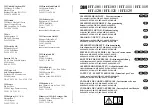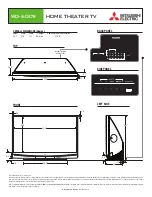
Mounting
Adjustment of the AKAS® at the first installation
16
6. Adjustment of the
AKAS®
at the first installation
adjustment of the receiver
adjustment of the transmitter
5
5.7
To guarantee a trouble-free operation, the mecanical
fixtions of both the receiver and the transmitter must be
fixed at solid, deformation-free plane-parallel construc-
tions at the ram.
The fastening brackets are designed for the fastening
and adjustment of the AKAS®-LC II.
Together with the sliding tenein blocks, the brackets al-
low a universal fastening.
Transmitter and receiver must be mounted in a way that
the receiver element E 4 remains free when the bending
punch is fixed .
If a height-adjustable support is used, adjust the sup-
port with the help of a spirit level vertically, i.e. parallel
to the guiding rails of the ram.
Drop a perpendicular from the bending line of the ben-
ding punch and adjust optically the receiver with the the
help of M4 adjustment screws so that the mark (centre
of the receiver elements) is located vertically at the front
of the receiver. When using a manually movable sup-
port for transmitter and receiver, make this test along
the entire displacement area.
Check the distance between the mark and the perpendi-
cular (bending line) to make sure that the receiver is
carried up parallelly to the bending line.
The transmitter must be mounted in a way that its
marks are located perpendicularly to the bending line,
the same way as the receiver is positioned.
If a support is used, adjust the support with the help of
a spirit level vertically, i.e. parallel to the guiding rails of
the ram.
The red transmitting beams should meet the receiver li-
ke it is shown inthe opposite illustration.
Fig.16/ 2
Lot
transmitter-beams
AKAS®-II Fig.16/4
Doku Nr. 995 Stand 1.12.2011 / Aui
The receiver and the transmitter must be swiveled around the longitudinal axis in a way that their housings are
plane parallel to the ram. With pivoting around the longitudinal axis, the adjustment screw or the locknut that
counteracts the screwing movements, must be loosened.
Ram
receiver housing
Fig. 16/1
FIESSLER
E L E K T R O N I K











































